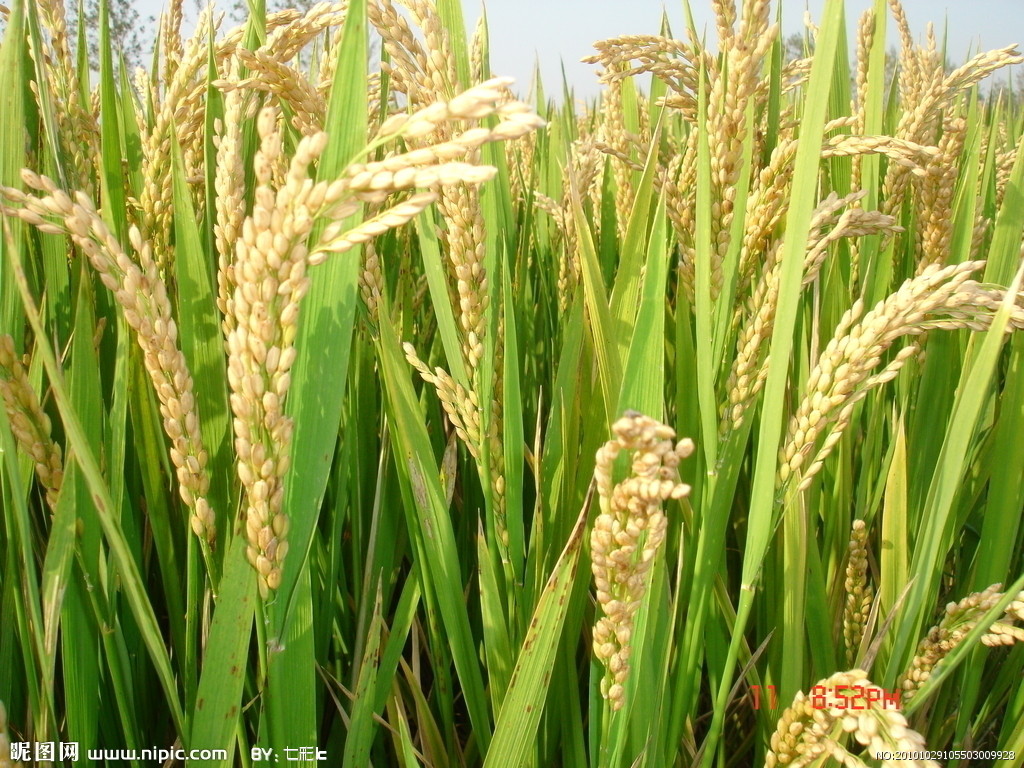PNAS:华中农业大学张启发研究团队发表水稻株型及分枝调控研究

12月2日,国际著名期刊《Proceedings of the National Academy of sciences of the United States of America》在线刊发华中农业大学张启发教授题为“Coordinated regulation of vegetative and reproductive branching in rice”(水稻营养和生殖分枝的协同调控)的研究论文。研究通过分析水稻3个micrornA及其靶基因在水稻株型发育中的作用及其分子机制,揭示了一个新的控制水稻株型建成的调控途径。王磊博士为本文的第一作者,张启发教授为通讯作者。
水稻是全球重要的粮食作物之一,更是我国的主食来源,提高水稻产量对保障粮食安全具有重要意义。水稻的产量由单株穗数、每穗粒数和粒重共同构成,彼此之间相互影响、相互制约。株型是产量的重要决定因子,以“理想株型”为育种目标的遗传改良极大的提高了水稻的产量,但是关于水稻株型建成的分子调控机制目前还不是很清楚。
该课题组前期的研究发现在水稻幼穗发育过程中存在两组呈相反表达模式的基因,其中一组基因表达随幼穗发育的进程逐渐下降,另一组却随幼穗发育而逐渐上升,这些基因被认为可能参与穗型的形成过程。研究人员基于这些信息,利用反向遗传学、基因组学、和分子生物学等多种手段,揭示了microRNA156、microRNA529和microRNA172及它们的靶基因SPL和AP2在水稻株型建成中的调控关系。研究结果显示,microRNA156和microRNA529通过调节SPL基因决定水稻的分蘖和穗发育过程,而SPL基因的表达量对决定水稻的株型具有重要作用,过高或过低的SPL基因表达都会导致穗部分枝的严重下降,表明调节SPL基因到合适的表达水平与水稻高产有关。进一步的研究显示SPL基因可以调控大量的转录调节因子的表达,其中SPL14通过直接调控microRNA172和MADS34-RCN1的途径来决定穗型发育。研究结果还揭示microRNA172和其靶基因AP2对提高穗粒数有重要作用,降低microRNA172或者提高AP2的表达,可以在不改变分蘖数的同时大大增加穗粒数,表明microRNA172和其靶基因AP2有望成为水稻遗传改良的重要靶点。该研究部分阐明了水稻株型发育的分子调控机制,对水稻的遗传改良具有重要的指导意义。
原文链接:
Coordinated regulation of vegetative and reproductive branching in rICE
原文摘要:
Grasses produce tiller and panicle branching at vegetative and reproductive stages; the branching patterns largely define the diversity of grasses and constitute a major determinant for grain yield of many cereals. Here we show that a spatiotemporally coordinated gene network consisting of the MicroRNA 156(miR156/)miR529/SQUAMOSA PROMOTER BINDING PROTEIN LIKE (SPL) and miR172/APETALA2 (AP2) pathways regulates tiller and panicle branching in rice. SPL genes negatively control tillering, but positively regulate inflorescence meristem and spikelet transition. Underproduction or overproduction of SPLs reduces panicle branching, but by distinct mechanisms: miR156 and miR529 fine-tune the SPL levels for optimal panicle size. miR172 regulates spikelet transition by targeting AP2-like genes, which does not affect tillering, and the AP2-like proteins play the roles by interacting with TOPLESS-related proteins (TPRs). SPLs modulate panicle branching by directly regulating the miR172/AP2 and PANICLE PHYTOMER2 (PAP2)/Rice TFL1/CEN homolog 1 (RCN1) pathways and also by integrating other regulators, most of which are not involved in tillering regulation. These findings may also have significant implications for understanding branching regulation of other grasses and for application in rice genetic improvement.
doi: 10.1073/PNAS.1521949112
作者:张启发

